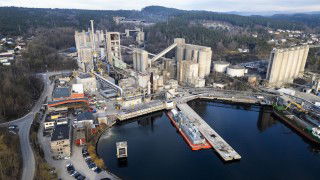It is apparent that cement companies are actively searching for ways to reduce their CO2 emission levels and their energy consumption in the pursuit of more efficient production. Research in this way has led to the development of alternative products to Ordinary Portland Cement (OPC), including Celitement, that are based on SiO2 and CaO containing standard raw material. While it has many of the attributes of OPC, Celitement also has the benefits of lower energy demands and reduced CO2 emissions. P Stemmermann, G Beuchle, K Garbev and U Schweike, Karlsruhe Institute of Technology, and H Möller, Celitement GmbH, Germany, tell ICR more about this alternative product.
Celitement is the general name for a new family of binding materials which is currently prepared for market entry by Celitement GmbH, Karlsruhe, Germany. The basic development has been carried out at Karlsruhe Institute of Technology (KIT). The main feature of Celitement is its production in a two-step process including hydrothermal preparation in an autoclave and further mechanochemical treatment of the hydrothermal products together with siliceous raw materials like sand, blast-furnace slag, glass, etc, or silica1.
This results in two very important properties of Celitement:
1. low energy demand and CO2 emissions during production
2. highly variable in composition and properties.
In terms of mineralogy, there is a large difference between Celitement and OPC. Whereas OPC consists of clinker minerals and hydrous and anhydrous calcium sulphates, Celitement is built up of a new type of hydraulic calcium hydrosilicates.
